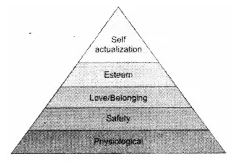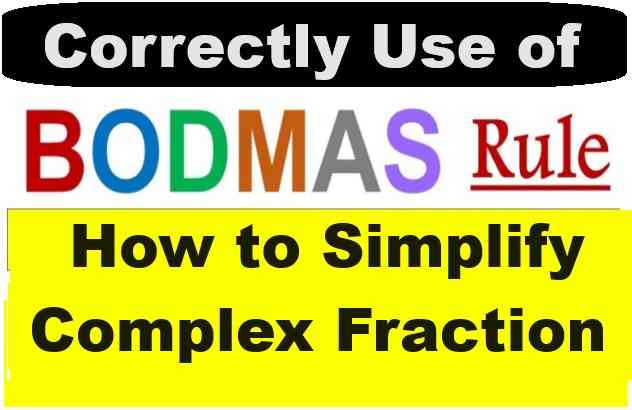ISC Business Studies 2015 Class-12 Previous Year Question Paper Solved for practice. Step by step Solutions with Questions of Part-1 and 2. By the practice of Business Studies 2015 Class-12 Solved Previous Year Question Paper you can get the idea of solving.
Try Also other year except ISC Business Studies 2015 Class-12 Solved Question Paper of Previous Year for more practice. Because only ISC Business Studies 2015 Class-12 is not enough for complete preparation of next council exam. Visit official website CISCE for detail information about ISC Class-12 Business Studies.
ISC Business Studies 2015 Class-12 Previous Year Question Paper Solved
-: Select Your Topics :-
Maximum Marks: 80
Time allowed: Three hours
- Candidates are allowed additional 15 minutes for only reading the paper. They must NOT start writing during this time.
- Answer Question 1 (Compulsory) from Part 1 and five questions from Part II, choosing two questions from Section A, two questions from Section B and one question from either Section A or Section B.
- The intended marks for questions or parts of questions are given in brackets [ ].
Part-I
Answer all questions
ISC Business Studies 2015 Class-12 Previous Year Question Paper Solved
Question 1.
Answer briefly each of the questions (i) to (xv) [15 x 2]
(i) Recruitment is a two way process. Explain.
(ii) What is meant by halo effect in interviewing?
(iii) Distinguish between training and development.
(iv) State two conditions where piece-rate system is most suitable.
(v) Define motivation.
(vi) Give any two advantages of Laissez-Faire style of leadership..
(vii) What is meant by dry promotion?
(viii) Explain the significance of remedial transfer.
(ix) Why layoff is considered to be a softer version of retrenchment ?
(x) Explain the two types of vertical communication.
(xi) Mention two limitations of oral communication.
(xii) State any two pre-requisites for passing a special resolution in a meeting.
(xiii) Differentiate between a statutory report and a non-statutory report.
(xiv) State one advantage and one disadvantage of using a window envelope.
(xv) Expand the following:
(a) LAN
(b) WWW
Answer 1:
(i) It is important for both the job applicant and the organisation to ensure that the right job goes to the right person. Taking the wrong job may be just as disastrous for the employee as for the organisation. Recruitment and selection, therefore, involves the organisation (represented by the manager) and the applicant trying to discover the extent to which their separate interests are likely to be served by the appointment. In other words, it is a two-way process.
(ii) The halo effect is when our impression of someone is skewed by one positive trait, leading us to make generalizations about them as a whole. In short, the halo effect describes our tendency to think someone is good in lots of areas if they’ve impressed us in one area.
(iii) Training and development are two different processes but inter-linked with each other. Training is a short-term process consisting of an event but development indicates the gradual and long¬term process relevant to the growth of personality and maturity regarding their potential capabilities. The scope of training is limited to specific job, development serves the purpose of general knowledge and covers large area. Generally, the characteristics such as to improve the productivity, quality of service organizational climate, health and safety are included in training purposes. The extension in capabilities, job performance and personal growth with the passage of time are the main objectives of development.
(iv)
(a) Where production quantity is more important than the quality of the product.
(b) When the work is of repetitive nature.
(v) Motivation is the word derived from the word ‘motive’ which means needs, desires, wants or drives within the individuals. It is the process of stimulating people to actions to accomplish the goals.
(vi) Laissez-faire leadership can be effective in situations where group members are highly skilled, motivated, and capable of working on their own.
Group members also take participation in solving the problems.
(vii) Promotion implies upgrading of an employee to a higher post involving increase in rank and responsibilities and he also gets monetary’ benefits. Dry promotion is a type of promotion that means that the person being promoted does not get any monetary’ benefit.
(viii) Remedial transfer is made to rectify mistakes in selection and placement. As a follow up, the wrongly placed employee is transferred to a more suitable job.
(ix) To lay-off is to temporarily or permanently terminate or get rid of the staff/employee. This is usually done by an company/firm on account of a business slow down as a result of which there is insufficient work to be allotted to an employee who is registered with the establishment and who has not yet been retrenched.
It is suspension or termination of employment (with or without notice) by an employer or management. Generally, a company layoff involves the cessation of employee benefits such as salary or wages. The laid-off employees are paid laid-off compensation. All of the laid-off employees should be taken back in their usual posts, as soon as the lay-off lifted out.
(x) Vertical communication has the forms in upward and downward communication. When a communication flows from a higher level of authority to a lower level of authority. It is called a downward communication. When it flows from lower level of authority to higher level of authority, it is called an upward communication.
(xi) Relying only on oral communication may not be sufficient as business communication is formal and very organized. Oral communication is less authentic than written communication as they are informal and not as organized as written communication. Oral communication is time-saving as far as daily interactions are concerned, but in case of meetings, long speeches consume lot of time and are unproductive at times.
(xii) A written resolution is passed by a majority of not less than 75% if it is passed by members representing not less than 75% of the total voting rights of eligible members. A resolution passed at a meeting on a show of hands is passed by a majority of not less than 75% if it is passed by not less than 75% of
- the members who, being entitled to do so, vote in person on the resolution, and
- the persons who vote on the resolution as duly appointed proxies of members entitled to vote on it.
(xiii) Every company incorporated under the companies act is required to get its accounts audited by a Chartered Accountant in Practice to ensure true and fair view of the accounts. Further, the auditor has to ensure compliance with various provisions of the Companies Act. Statutory Audit , ensures reliability of annual accounts of the company for various consumers of Accounts of the Company like government, shareholders, debtors, creditors, bankers etc. A non-statutory audit is a review and verification of a company or organization’s business that is not required by either the law or a regulatory agency.
(xiv) Advantage of window envelope: If a letter bears a complete address, the letter can be folded in such a manner to place the address behind the window. In such a way, address needs not be written by hand on the envelope.
Disadvantage : This type of envelope is costly and it bears a risk to tearing off the window.
(xv) LAN — Local Area Network
WWW — World Wide Web
Part – II (60 Marks)
Answer any five questions
Solved Previous Year Question Paper of ISC Class-12 Business Studies 2015
Question 2.
(a) State and explain any three steps involved in the selection procedure. [6]
(b) Differentiate between the wage incentive plans given by Halsey and Rowan. [8]
Answer 2:
(a) 1. Job Analysis : The first step in selection process is analyzing the job. Job analy sis consists of two parts :
- Job Description, and
- Job Specification.
Proper job analysis helps to advertise the job properly. Accordingly, the right candidates may apply for the job, thus saving a lot of time and effort of the selectors.
Advertising the Job : The next step is to advertise the job. The job can be advertised through various media. The right details about the job and the candidate must be given in the advertisement.
Initial Screening: The initial screening can be done of the applications and of the applicant. Usually, a junior executive does the screening work. At this stage, the executive may check on the general personality, age, qualifications, family background of the candidate. The candidate may also be informed of salary, working conditions, etc.
(b)Bonus – Under Halsey plan the bonus increases steadily with increase in efficiency. But in Rowan plan the bonus increases up to a certain point and starts declining thereafter. Rowan plan provides better bonus than Halsey plan till the work is completed in half the standard time.
When the work is completed in exactly half the standard time, the bonus is the same under both the plans. When the work is completed in less than half the standard time, bonus is greater under Halsey plan.
Under Rowan plan, less efficient worker may get the same bonus as a more efficient one. For example, if the standard time is 10 hours and hourly rate of wage is ₹ 10, the bonus payable under the plan will be ₹ 24 when the work is completed in 6 hours. The same amount of bonus is payable to another worker who takes only 4 hours to complete it.
Earnings per hour: Under the Rowan plan when time saved is less than 50% of standard time, earnings per hour is higher whereas under Halsey plan when time saved is more than 50% of standard time, earnings per hour is higher. At 50% time saved, earnings per hour are the same under both the plans.
Quality of output: The quality of work is not affected much under Rowan plan as the bonus increases at a decreasing rate at higher levels of efficiency and the workers do not prefer to rush work.
Question 3. (ISC Business Studies 2015 Class-12)
(a) Define training. Give any four benefits that an employee can get from training. [6]
(b) With the help of a diagram, explain the hierarchy of needs as given by Ma slow. [8]
Answer 3:
(a) Training is a process to increase the skills and knowledge of the employee doing a specific job.
Training has many benefits for employees:
- They acquire new skills, increasing their contribution to the business and building their self-esteem
- The training they do can take them into other positions within the organisation – positions with better prospects and/or better pay.
- They are up skilled to do new and different tasks, which keeps them motivated and fresh.
- The trained employees are well aware of working techniques. They tend to minimize their mistakes in the processes.
(b) There are five different levels in Mas low’s hierarchy of needs:
Physiological Needs : These include the most basic needs that are vital to survival, such as the need for water, air, food, and sleep. Ma slow believed that these needs are the most basic and instinctive needs in the hierarchy because all needs become secondary until these physiological needs are met.
Security Needs: These include needs for safety’ and security. Security needs are important for survival, but they are not as demanding as the physiological needs. Examples of security needs include a desire for steady employment, health care, safe neighborhoods, and shelter from the environment.
Social Needs : These include needs for belonging, love, and affection. Maslow described these needs as less basic than physiological and security needs. Relationships such as friendships, romantic attachments, and families help fulfill this need for companionship and acceptance, as does involvement in social, community or religious groups.
Esteem Needs : After the first three needs have been satisfied, esteem needs becomes increasingly important. These include the need for things that reflect on self¬esteem, personal worth, social recognition, and accomplishment.
Self-actualizing Needs : This is the highest level of Mas low’s hierarchy of needs. Self-actualizing people are self-aware, concerned with personal growth, less concerned with the opinions of others, and interested in fulfilling their potential.

Question 4.
(a) State three advantages and three disadvantages of merit based promotion. [6]
(b) Define performance appraisal. Briefly explain the pros and cons of staff appraisal of subordinates by their superiors. [8]
Answer 4:
(a) Advantages of Merit Based Promotion
No favoritism: A seniority-based promotion structure can eliminate the perception of favoritism. Employers typically won’t have to worry about a newer worker coming in and quickly leapfrogging them to obtain a promotion simply because they are friends with an upper-level supervisor or because of the way they dress or that they are more effective at playing the game of corporate politics. Instead, workers have a sense that if they pay their dues, they will be rewarded at some point in the future.
Motivation Boost: A merit-based program, on the other hand, can provide motivation leading to increased productivity. Workers who recognize that the best performers are the ones who get ahead may put forth the extra effort they believe it takes to receive promotions. For instance, salespeople w ho realize that a sales manager position is awarded to the person with the highest sales numbers may strive to produce the desired results, generating additional revenue for the company in the process.
Reward for Ability : Workers possess varying levels of skills and abilities, and a merit-based program rewards those who may have the most to offer the organization in the long run. While tenured employees offer the benefit of greater experience, this does not necessarily equate with more ability. A less experienced worker possessing a greater flair for innovation or creativity may be more likely to generate ideas that help the company move forward in the future.
Disadvantages of Merit Based Promotion:
- Merit based promotion system is not beneficial for the senior employees. In such a system, a senior employee may or may not get promotion for a long time. It may lead to his frustration.
- A senior employee may not like that his junior (in age or service), is dictating him terms for doing duties.
- Senior employees may start doing lesser work.
- Such a system may lead to indiscipline in the organization.
(b) Performance Appraisal is the systematic evaluation of the performance of employees and to understand the abilities of a person for further growth and development.
PROS:
They provide a document of employee performance over a specific period of time.
- They provide a structure where a manager can meet and discuss performance with an employ ee.
- They allow a manager the opportunity to provide the employee with feedback about their performance and discuss how well the employee goals were accomplished.
- They provide a structured process for an employee to clarify expectations and discuss issues with their manager.
- They provide a structure for thinking through and planning the upcoming year and developing employee goals.
- They can motivate employees if supported by a good merit increase and compensation system.
CONS:
- If not done right, they can create a negative experience.
- Performance appraisals are very time consuming and can be overwhelming to managers with many employees.
- They are based on human assessment and are subject to rater errors and biases.
- Can be a waste of time if not done appropriately.
- They can create a very stressful environment for everyone involved.
Question 5. (ISC Business Studies 2015 Class-12)
(a) Explain the various elements of the communication process. [6]
(b) Write short notes on the following :
(i) Dictaphone [8]
(ii) Email
Answer 5:
(a) Sender: The person who intends to convey the message with the intention of passing information and ideas to others is known as sender or communicator.
Ideas : This is the subject matter of the communication. This may be an opinion, attitude, feelings, views, orders or suggestions.
Encoding: Since the subject matter of communication is theoretical and intangible, its further passing requires use of certain symbols such as words, actions or pictures etc. Conversion of subject matter into these symbols is the process of encoding.
Communication Channel: The person who is interested in communicating has to choose the channel for sending the required information, ideas etc. This information is transmitted to the receiver through certain channels which may be either formal or informal.
Receiver : Receiver is the person who receives the message or for whom the message is meant for. It is the receiver who tries to understand the message in the best possible manner in achieving the desired objectives.
Decoding : The person who receives the message or symbol from the communicator tries to convert the same in such a way so that he may extract its meaning to his complete understanding.
Feedback : Feedback is the process of ensuring that the receiver has received the message and understood in the same sense as sender meant it.
(b) A Dictaphone is a specialized piece of recording technology’. These devices arc primarily’ designed to facilitate the recording and subsequent transcription of the spoken word.
Email is short for ‘electronic mail. Similar to a letter, it is sent via the internet to a recipient. An email address is required to receive email, and that address is unique to the user. Some people use internet-based applications and some use programs on their computer to access and store emails.
Question 6. (ISC Business Studies 2015 Class-12)
(a) Name and explain any three staff locating systems that can be used in a modem organisation. [6]
(b) Discuss any four advantages and any four limitations of face to face communication. [8]
Answer 6:
(a) Staff locating devices
Cell Phones : Most of the companies have provided cell phones to their employees or they are possessing it at their own. Immediate contact can be made by the person from office. If the person is not in the position to attend the call, atleast he comes to know from where call is being received.
Bells and Buzzers : Bells and buzzers are devices which produce sound on pressing a button. This button is located at the table of the superior and by pressing the button bell sounds outside his room/cabin and the sub-staff/peon to whom it is intended reaches to the location of calling official.
Loud Speakers : Speakers can also be used in locating the employees. The message by the official is given to the Reception Area or other concerned employee who makes an announcement on public speaker system to address an employee.
(b) Advantages of Face to Face Communication:
Demonstrate importance: Being there in person tells your audience that they are important to you and the issue you are discussing is worth your time and theirs. Your focus will get people’s attention and increase the potential for your message to be heard.
Interpret thoughts and feelings : When you are face to face, you can see and respond to people’s reactions – like facial expressions and body language – as well as their tone of voice. Leaders have the chance to show they care by asking probing questions and actively listening to understand the audience’s perspective. This is especially critical when you need employees to adopt new behaviors to advance your goals, such as in times of change.
Enhance credibility and trust: Face-to-face situations allow you to share your strategy, explain it clearly, and answer questions honestly. Employees see how actions align with words, which enhances leaders’ credibility and trust.
Build relationships: Interacting directly with other leaders, managers and employees expands your network and establishes shared experience that can enhance future communication. It also helps create camaraderie that is the basis of cooperation and success across the organization.
Disadvantages of Face to Face Communication:
- Difficult to practice in large-sized organization: Face-to-face communication is extremely difficult to practice in large-sized organizations, particularly if their various units or departments are situated at different places.
- Not effective in large gatherings : It is very difficult to get a message across to large gatherings. Even though the speaker is addressing them face-to-face, the vital personal touch is missing. In the absence of a satisfactory feedback, his speech lapse into a monologue.
- Ineffective if the listener is not attentive: A limitation which the face-to-face communication shares with oral communication is that its effectiveness is closely linked with the listener’s attentiveness. Since human beings can listen to grasp the message faster than the speed at which they are delivered, they will easily get delivered thus making
- communication ineffective.
- Responsibility: No responsibility can be fixed on the part of speaker or listener as there is no record available for such communication.
Question 7. (ISC Business Studies 2015 Class-12)
(a) What are the advantages of having centralized mailing department in an organization ? [6]
(b) With reference to board meetings of a company, answer the following :
(i) What should be the frequency of these meetings ?
(ii) What all have the power to convene these meetings ?
(iii) What are the rules governing the serving of notice of these meetings ?
(iv) What course of action should be taken if quorum is not present for these meetings ?
Answer 7:
(a) Advantages of Centralized Mailing Department
Cost Saving: A centralized mailing department saves costs. Instead of having a mailing seat in each department, a single centralized mailing department can save a lot of staff costs. It results in saving of clerical labour in the various departments. Departmental clerks and stenographers, being relieved of the mail handling work, can perform their departmental work better.
Proper Record: Proper record of letters received and dispatched is maintained in a single department.
Duplication and Errors : Mail-handling operation can be systematized which reduces duplication and errors, thereby effecting saving in time and cost.
Responsibility of Workers: Responsibility for performing the different routine operations can be entrusted to different workers who have special aptitude for such work. This ensures accurate and speedy performance of work.
Careful Handling of Letters: Prompt and careful opening of inwards mail,careful scrutinizing of the envelopes and their enclosures, accurate stamping of date and time of receipt and prompt distribution of mail to proper departments and persons is ensured. Similarly, careful folding and insertion into envelops of outwards mail, proper sealing and stamping of the envelopes, accurate recording in Post Book and prompt dispatch or delivery of the mail is also ensured.
(b)
(i) Frequency of Meeting: Section 173 of the Act deals with Meetings of the Board and Section 174 deals with quorum.
The Act provides that the first Board meeting should be held within thirty days of the date of incorporation.
In addition to the first meeting to be held within thirty days of the date of incorporation there shall be minimum of four Board meetings every year and not more than one hundred and twenty days shall intervene between two consecutive Board meetings.
In case of One Person Company (OPC), small company and dormant company, at least one Board meeting should be conducted in each half of the calendar year and the gap between two meetings should not be less than Ninety days.
Board of Directors
Notice of every meeting of the Board of directors of a company must be given in writing to every director for time being in Indias and to every other director at the usual address in India.
(iv) If the quorum is not present within half an hour of the appointed time, then the meeting shall be adjourned to the same day next week at the same time and place or such other time and place as the Board may determine.
However, if the general meeting is called by revolutionists under section 100 (erstwhile section 169) then in case the quorum is not present within half an hour as above, then the meeting w ill stand cancelled.
For the adjourned meeting however, the company will have to give a fresh notice of at leas! 3 days either by sending individual notices to the shareholders or by publishing an advertisement in newspapers in English and in vernacular language in the district where the registered office of the company is situated. If at the adjourned meeting also quorum is not present within half an hour of the appointed time then whatever quorum is present will constitute a proper quorum.
Question 8. (ISC Business Studies 2015 Class-12)
(a) With reference to visual communication, explain the following: [6]
(i) Pie diagram
(ii) Bar graph
(iii) Histogram
(b) Draft an application in response to an advertisement for the post of a Physics teacher for teaching classes XI and XII. An appropriate Bio-data of the applicant should be prepared and enclosed with the application.
Answer 8:
(a) When the information is shown through a circle, it is called a pie chart. Pie charts are often used when it is necessary to show the relationship of parts to a whole. If you use too many segments in the pie, the impact could be lost. We represent the information in the pie through percentage. In this chart shading may be used to focus special attention on a single element.
Bar graphs are used to display data in a similar way to line graphs. However, rather than using a point on a plane to define a value, a bar graph uses a horizontal or vertical rectangular bar that levels off at the appropriate level.
There are many characteristics of bar graphs that make them useful. Some of these are that:
- They make comparisons between different variables very easy to see.
- They clearly show trends in data, meaning that they show how one variable is affected as the other rises or falls.
- Given one variable, the value of the other can be easily determined.
A histogram is a type of graph that has wide applications in statistics. Histograms allow a visual interpretation of numerical data by indicating the number of data points that lie within a range of values, called a class or a bin. The frequency of the data that falls in each class is depicted by the use of a bar.
(b)
Naina Khera
12. Kasumpti
Shimla-171005
The Principal,
Tara Hall Public School The Mall
Shimla-171001
Reference : Your advertisement in “The Times of India” dated 20th April, 2015.
Subject : Application letter for the post of Physics Teacher.
Sir,
With reference to your advertisement for the post of Teacher in the Times of India dated 20th April, 2015.1 wish to apply for the same.
I am a very energetic person with excellent communication skills and ready to face any target set by your esteemed School. I am willing to work hard and being young I am also eager to add knowledge with experience.
I hold an M.Sc. degree in Physics from Punjab University, Chandigarh and I have also passed B.Ed. from Indira Gandhi Open University, New Delhi.
My resume is sent here with, for your reference. I shall be much thankful to you. If you grant me an interview call at your convenient time. I am looking forward to join your esteemed School as early as possible.
Thanking You,
Yours faithfully,
(Naina Khera)
Encl: – Resume and Xerox copy of educational certificates.
-: End of ISC Business Studies 2015 Class-12 Solved Paper :-
Return to – ISC Class-12 Solved Previous Year Question Paper
Thanks
Please Share with Your Friends




